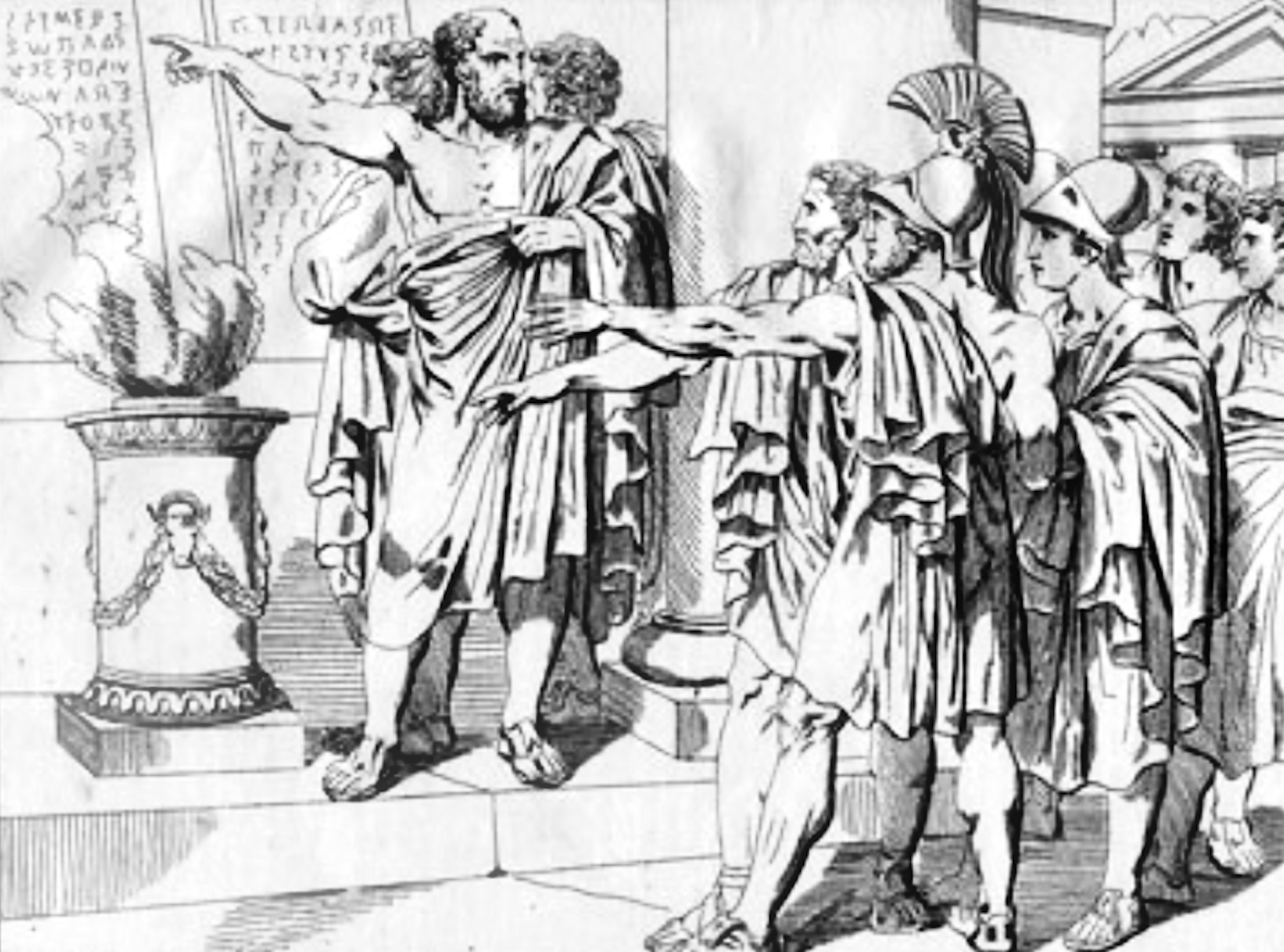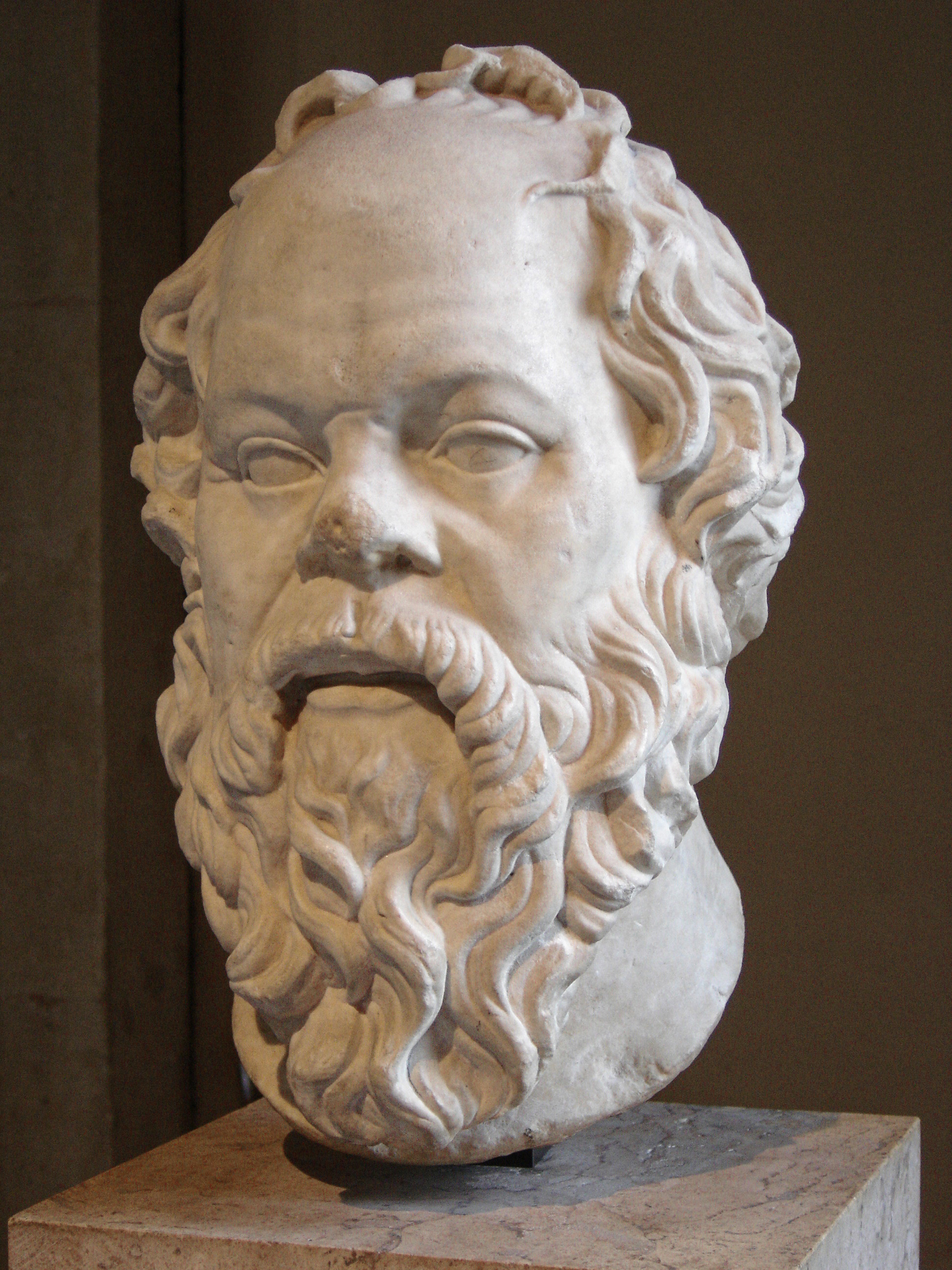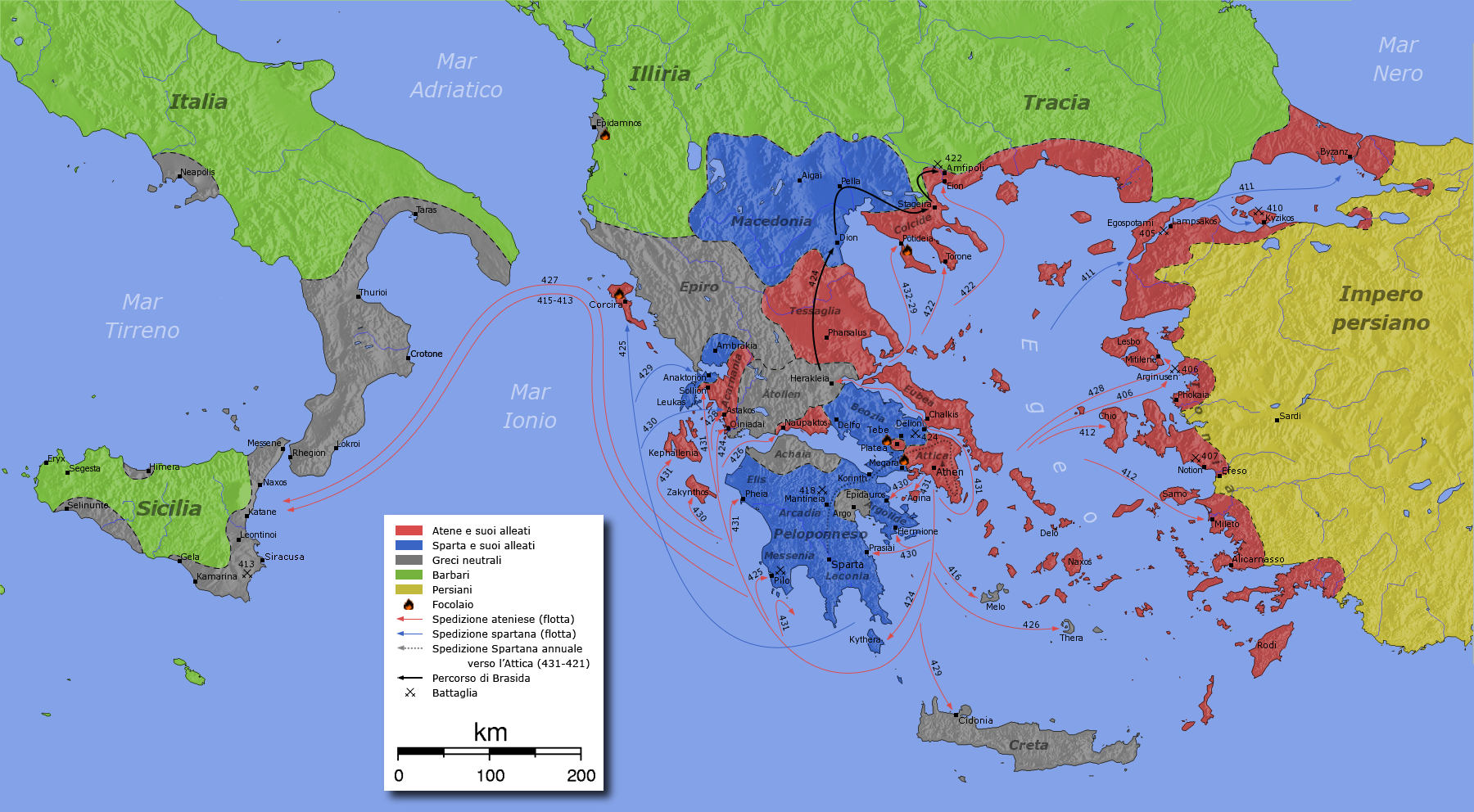|
Prytaneion
A ''prytaneion'' ( grc, Πρυτανεῖον, la, prytanēum) was seat of the ''prytaneis'' (Executive (government), executive), and so the seat of government in ancient Greece. The term is used to describe any of a range of ancient structures where officials met (normally relating to the government of a city), but the term is also used to refer to the building where the officials and winners of the Olympic Games met at Olympia, Greece, Olympia. The ''prytaneion'' normally stood in centre of the city, in the agora. In general in ancient Greece, each state, city or village possessed its own central hearth and sacred fire, the ''prytaneion'', representing the unity and vitality of the community. The fire was kept alight continuously, tended by the king or members of his family. The building in which this fire was kept was the ''prytaneion'', and the chieftain (the king or ''prytanis'') probably made it his residence. The building contained the holy fire of Hestia, the goddess of t ... [...More Info...] [...Related Items...] OR: [Wikipedia] [Google] [Baidu] |
Olympia, Greece
Olympia ( el, label=Modern Greek, Ολυμπία ; grc, Ὀλυμπία ), officially Archaia Olympia ( el, label=Modern Greek, Αρχαία Ολυμπία; grc, Ἀρχαία Ὀλυμπία, links=no; "Ancient Olympia"), is a small town in Elis on the Peloponnese peninsula in Greece, famous for the nearby archaeological site of the same name. This site was a major Panhellenic religious sanctuary of ancient Greece, where the ancient Olympic Games were held every four years throughout Classical antiquity, from the 8th century BC to the 4th century AD. They were restored on a global basis in 1894 in honor of the ideal of peaceful international contention for excellence. The sacred precinct, named the Altis, was primarily dedicated to Zeus, although other gods were worshipped there. The games conducted in his name drew visitors from all over the Greek world as one of a group of such "Panhellenic" centres, which helped to build the identity of the ancient Greeks as a nation. D ... [...More Info...] [...Related Items...] OR: [Wikipedia] [Google] [Baidu] |
Solon
Solon ( grc-gre, Σόλων; BC) was an Athenian statesman, constitutional lawmaker and poet. He is remembered particularly for his efforts to legislate against political, economic and moral decline in Archaic Athens.Aristotle ''Politics'' 1273b 35–1274a 21 His reforms failed in the short term, yet Solon is credited with having laid the foundations for Athenian democracy.Stanton, G. R. ''Athenian Politics c. 800–500 BC: A Sourcebook'', Routledge, London (1990), p. 76.E. Harris, ''A New Solution to the Riddle of the Seisachtheia'', in ''The Development of the Polis in Archaic Greece'', eds. L. Mitchell and P. Rhodes (Routledge 1997) 103 His constitutional reform also succeeded in overturning most laws established by Draco. Modern knowledge of Solon is limited by the fact that his works only survive in fragments and appear to feature interpolations by later authors and by the general paucity of documentary and archaeological evidence covering Athens in the early 6th cen ... [...More Info...] [...Related Items...] OR: [Wikipedia] [Google] [Baidu] |
Prytaneis
The ''prytaneis'' (πρυτάνεις; sing.: πρύτανις ''prytanis'') were the executives of the '' boule'' of ancient Athens. Origins and organization The term (like ''basileus'' or ''tyrannos'') is probably of Pre-Greek etymology (possibly cognate to Etruscan ''(e)prθni''). When Cleisthenes reorganized the Athenian government in 508/7 BCE, he replaced the old Solonian boule, or council, of 400 with a new boule of 500. The old boule consisted of 100 members of each of the four ancestral tribes. Cleisthenes created ten new tribes and made the boule consist of 50 men from each of these tribes. Each tribe's delegation would be an executive of the boule for one-tenth of the year, so that ten groups of prytaneis served each year, a position granted by sortition. The executive officers were known as prytaneis and their term of office as a prytany (πρυτανία). Duties The ''prytaneis'' served every day during their prytany. They formally called to meeting the full ... [...More Info...] [...Related Items...] OR: [Wikipedia] [Google] [Baidu] |
Apology (Plato)
The ''Apology of Socrates'' ( grc-gre, Ἀπολογία Σωκράτους, ''Apología Sokrátous''; la, Apologia Socratis), written by Plato, is a Socratic dialogue of the speech of legal self-defence which Socrates (469–399 BC) spoke at his trial for impiety and corruption in 399 BC. Specifically, the ''Apology of Socrates'' is a defence against the charges of "corrupting the youth" and "not believing in the gods in whom the city believes, but in other '' daimonia'' that are novel" to Athens (24b). Among the primary sources about the trial and death of the philosopher Socrates, the ''Apology of Socrates'' is the dialogue that depicts the trial, and is one of four Socratic dialogues, along with ''Euthyphro'', ''Phaedo'', and ''Crito'', through which Plato details the final days of the philosopher Socrates. The text of apology The ''Apology of Socrates'', by the philosopher Plato (429–347 BC), was one of many explanatory ''apologia'' about Socrates's legal defense ag ... [...More Info...] [...Related Items...] OR: [Wikipedia] [Google] [Baidu] |
Synoikism
Synoecism or synecism ( ; grc, συνοικισμóς, ''sunoikismos'', ), also spelled synoikism ( ), was originally the amalgamation of villages in Ancient Greece into ''poleis'', or city-states. Etymologically the word means "dwelling together (''syn'') in the same house (''oikos'')." Subsequently, any act of civic union between polities of any size was described by the word ''synoikismos''. The closest analogy today is the incorporation of a city; in fact, "incorporation" is often used to translate synoikismos, in addition to the Latinized synoecism. Synoecism is opposed to Greek dioecism (διοικισμóς, ''dioikismos''), the creation of independent communities within the territory of a polis. Synoecism is the result of a few major factors, mainly an increase in population density of adjacent settlements, with an incorporation proposed for economic, political or ideological advantages, such as the synoecism of the communities of Attica into Athens, or by imposition o ... [...More Info...] [...Related Items...] OR: [Wikipedia] [Google] [Baidu] |
Hestia
In ancient Greek religion and mythology, Hestia (; grc-gre, Ἑστία, meaning "hearth" or "fireside") is the virgin goddess of the hearth, the right ordering of domesticity, the family, the home, and the state. In myth, she is the firstborn child of the Titans Cronus and Rhea, and one of the Twelve Olympians. According to ancient Greek tradition, Hestia was along with four of her five siblings devoured by her own father Cronus as an infant due to his fear of being overthrown by one of his offspring, and was only freed when her youngest brother Zeus forced their father to disgorge the children he had eaten. Cronus and the rest of the Titans were cast down, and Hestia then became one of the Olympian gods, the new rulers of the cosmos, alongside her brothers and sisters. After the establishment of the new order and in spite of her status, Hestia withdraws from prominence in mythology, with few and sparse appearances in tales. Similar to what Athena and Artemis did, Hestia elect ... [...More Info...] [...Related Items...] OR: [Wikipedia] [Google] [Baidu] |
Choragic Monument Of Lysicrates
The Choragic Monument of Lysicrates near the Acropolis of Athens was erected by the ''choregos'' Lysicrates, a wealthy patron of musical performances in the Theater of Dionysus, to commemorate the prize in the dithyramb contest of the City Dionysia in 335/334 BCE, of which performance he was liturgist. The monument is known as the first use of the Corinthian order on the exterior of a building. It has been reproduced widely in modern monuments and building elements. History The circular structure, raised on a high squared podium, is the first Greek monument built in the Corinthian order on its exterior. It was originally crowned with an elaborate floral support for the bronze tripod, the prize awarded to Lysicrates' chorus. The sculpture on the frieze is thought to depict the myth of Dionysus and the Tyrrhenian pirates from the Homeric Hymn to Dionysus. Immediately below the architrave and between the column capitals is a second frieze depicting the choragic tripods. The monum ... [...More Info...] [...Related Items...] OR: [Wikipedia] [Google] [Baidu] |
Peisistratos
Pisistratus or Peisistratus ( grc-gre, Πεισίστρατος ; 600 – 527 BC) was a politician in ancient Athens, ruling as tyrant in the late 560s, the early 550s and from 546 BC until his death. His unification of Attica, the triangular peninsula of Greece containing Athens, along with economic and cultural improvements laid the groundwork for the later preeminence of Athens in ancient Greece. His legacy lies primarily in his institution of the Panathenaic Games, historically assigned the date of 566 BC, and the consequent first attempt at producing a definitive version of the Homeric epics. Peisistratos' championing of the lower class of Athens is an early example of populism. While in power, he did not hesitate to confront the aristocracy and greatly reduce their privileges, confiscating their lands and giving them to the poor. Peisistratos funded many religious and artistic programs, in order to improve the economy and spread the wealth more equally among the Athenian p ... [...More Info...] [...Related Items...] OR: [Wikipedia] [Google] [Baidu] |
Polemon Of Athens
Polemon of Athens ( grc-gre, Πολέμων ὁ Ἀθηναῖος, fl. 2nd century BC) was an ancient Greek Stoic philosopher and geographer. Of Athenian citizenship, he was most widely known as Polemon of Athens, but he was born either in Ilium, Samos, or Sicyon, and was also known as Polemon of Ilium and Polemon Periegetes. He traveled throughout Greece and wrote about the places he visited. He also compiled a collection of the epigrams he saw on the monuments and votive offerings. None of these works survive, but many later writers quote from them. Life Polemon was the son of Euegetes, and he was a contemporary of Aristophanes of Byzantium and Ptolemy Epiphanes. He was a follower of the Stoic philosopher Panaetius. He made extensive journeys throughout Greece to collect materials for his geographical works, in the course of which he paid particular attention to the inscriptions on votive offerings and on columns, whence he obtained the surname of ''Stelokopas''. Works In his ... [...More Info...] [...Related Items...] OR: [Wikipedia] [Google] [Baidu] |
Athenian Constitution
Constitution of the Athenians (Greek: ''Athenaion politeia'') may refer to either of two ancient treatises on the subject of the government of Athens: * Constitution of the Athenians (Aristotle), a treatise on the Athenian constitution written by Aristotle or one of his students * Constitution of the Athenians (Pseudo-Xenophon), a treatise preserved under the name of Xenophon, though not actually by him It may also refer to the following historical constitutional and legal codes under which Athens was governed at various periods: * Draconian constitution, the code of laws in Athens written by Draco in the last quarter of the seventh century BC * Solonian constitution, the constitution implemented in Athens by Solon in the early sixth century BC * Areopagite constitution The Areopagite constitution is the modern name for a period in ancient Athens described by Aristotle in his '' Constitution of the Athenians''. According to that work, the Athenian political scene was dominated, be ... [...More Info...] [...Related Items...] OR: [Wikipedia] [Google] [Baidu] |





